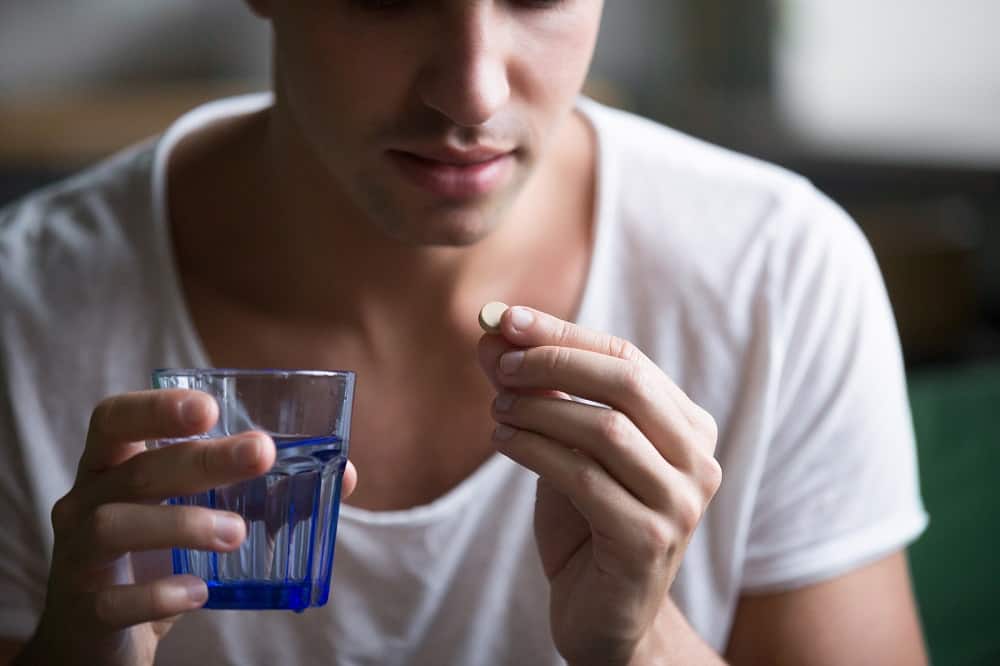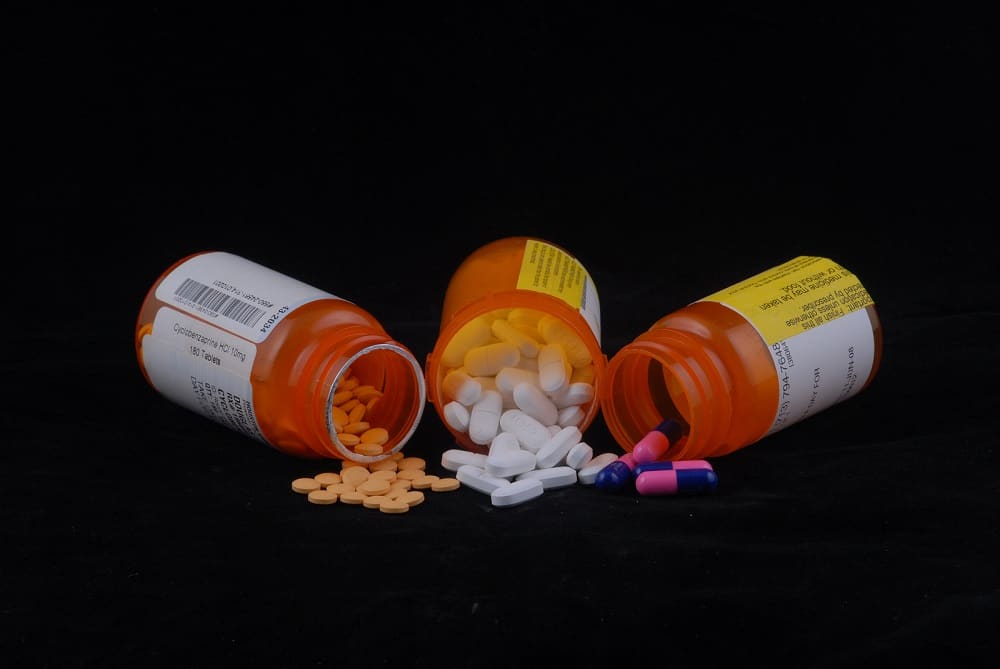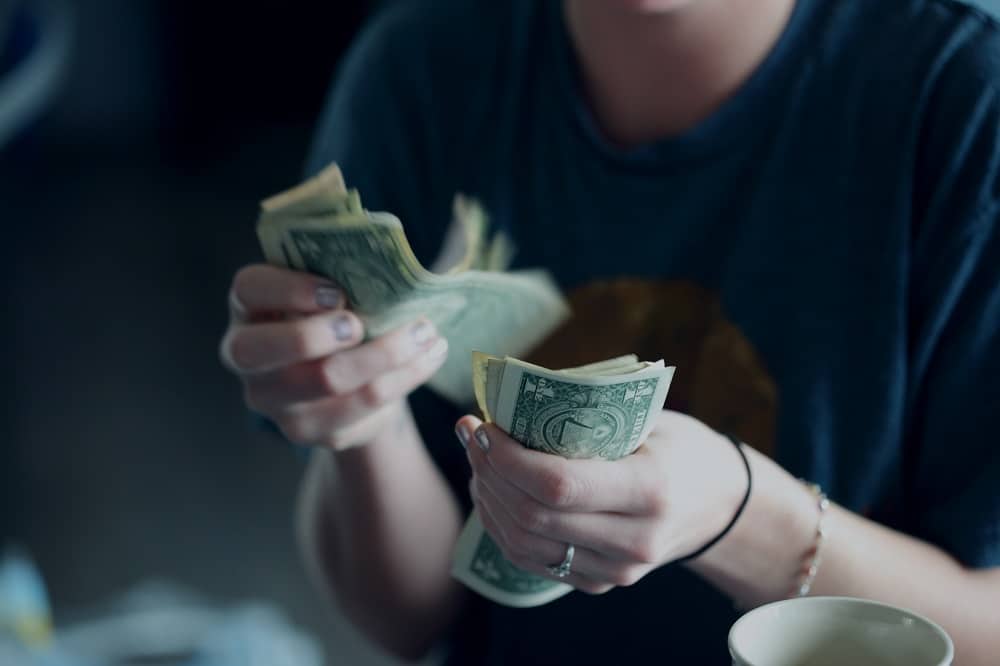Studies show that young adults are the biggest prescription drug abusers in America. How bad is the youth drug problem and what’s driving it? Gabby never intended to become a drug addict. In fact, the young woman never even touched an illegal drug. But, like many fellow young people, she found herself spiraling into unexpected drug addiction. She was a seventeen-year-old high school senior, she tells us when her doctor first prescribed her Percocet, a brand name version of oxycodone. She’d injured her knee during a soccer game. The former soccer star forward was rushed into the operating room a few days later, where doctors worked diligently to repair her leg. After the surgery, Gabby, now 24, received her first opioid prescription. “It worked well at first,” she says, explaining that it helped to ease some of her post-surgery pain. “It also made me extremely relaxed, which I needed at the time. I mean, I thought that I was going to play soccer in college. Underneath the haze of the drugs, I realize now that I was very depressed.” At the time Gabby had no idea what she was getting into. But, her Percocet prescription was just the beginning of a 6-year long struggle with drug addiction.
“Get your loved one the help they need. Our substance use disorder program accepts many health insurance plans, this is our residential program.”
From Prescription to Addiction: A Common Story
A year after her knee injury, Gabby found herself living on-campus at an out-of-state university. Unable to play soccer, she committed herself to her education, studying philosophy and taking elective classes in art. Always a good student, she excelled during her first year of college. At the time, she planned on attending law school after she obtained her Bachelor’s degree. But, she also harbored a secret few people knew: she was still using opioids. “It was weird. I was never a drug user,” she explains, “But I took them for a few weeks after my surgery, and before I knew it I wanted more.” She admits that, soon after she was prescribed, she started taking more than she was supposed to. While the doctor told her to take 7.5 mg several times per day, she’d often double that. Before long, she was taking three or four times the directed amount. “Honestly, the doctor was probably a little too generous with me,” she admits, “I went back four or five times to get a refill and never got any pushback.” At a certain point, however, she stopped refilling her prescription. Not wanting her parents to know she’d been misusing her prescription, she looked elsewhere for meds.
The Accessibility of Prescription Drugs
It didn’t take long for Gabby to find someone who could supply her pills. Even as a good student who steered clear of drugs, she was able to find a fix just by asking around. “I told someone it was for my knee,” she explains, “A person I knew through sports put me in contact with their cousin, who knew where to get anything. I paid him a lot of money for pills that year.” When she arrived at college, drugs were even easier to find. Although Percocet wasn’t always available, she realized she could take almost any other opioid and feel the same effects. “Sometimes I didn’t even know what I was getting,” she explains, “Sometimes it’d be Vicodin. Other times it was Lorcet. Honestly, I didn’t really care about the brand name because I just needed it to function.” She also started using anti-anxiety medications like Xanax and Valium, which she enjoyed for their calming effects. “I was fighting to keep my head above water,” she explains, “As a full-time student maintaining a hardcore addiction, I was constantly on edge.
Sliding Toward Rock Bottom
It took years for anyone, including Gabby herself, to realize she had a problem. But, throughout college, she’d slowly built up her tolerance. She needed higher and higher doses just to function. “Surprisingly, I was doing okay in school,” she says, “But I was taking a crazy amount of pills every day.” At the advice of a drug-using friend, she’d also started crushing up her pills and snorting them. This allowed her to get much higher, much faster. But, it was also the point where she started to worry. “The first time I snorted, I knew I was an addict,” she says, “I was in poor health, I was tired all of the time, and I didn’t even have money for lunch. I just kept thinking, ‘Wow, I can’t believe I’ve become a drug addict.’” Yet, she refused to ask for help. She didn’t tell her parents and continued snorting instead. It wasn’t until she collapsed in the street one day while walking home from class that her family realized what was going on. “They knew I wasn’t the same person I’d been before,” she says, “But they didn’t realize the extent of my drug use. Being rushed to the hospital really opened up everyone’s eyes, including mine.”
America’s Youth Prescription Drug Problem
Every day, five people aged 18-24 die from a prescription drug overdose. Gabby is lucky. After being rushed to the hospital, she checked into a detox facility. She spent four weeks meeting with therapists and counselors in an inpatient rehab facility. Since then, she’s worked hard to maintain her sobriety. But, many others aren’t so lucky. According to a recent study published by the National Institute on Drug Abuse, an average of five young Americans dies from prescription drug overdose every single day. Of the 47,055 drug overdose deaths that happened in America during 2014, more than 5% were caused by prescription medications and occurred in people ages 18-24. The NIH tells us that the main culprits are readily available meds—opioid pain relievers, anti-anxiety medications, and ADHD drugs like Adderall. Like Gabby, many of the overdose victims started by taking a prescription. Some of these cases involved other drugs like cocaine or heroin. But, in many of the cases, the victims had never even seen an illegal drug, let alone tried one. Gabby was able to get help. Unfortunately, many others allow their habit to spiral out of control until it’s too late.
“We treat both addiction and co-occurring disorders and accept many health insurance plans. Take a look at our inpatient program.”
Young Adult Prescription Drug Abuse: Facts & Statistics
Let’s take a glance at youth prescription drug abuse in America. Here are some facts, figures, and statistics:
- According to the Truth Initiative, roughly 1,300 young people misuse an opioid prescription for the first time every day.
- Over half of young adults who misuse prescription opioids get them from a family member or friend.
- People who take an opioid prescription in high school are 33% more likely to develop a drug habit after graduation.
- In 2016, 20% of all young adult deaths were caused by opioids. While some of these were due to illegal opioid use, many of them were caused by legal prescription opioids like fentanyl and hydrocodone.
- There were roughly 1.7 million potential life years lost due to opioids in 2016 alone.
- Opioids aren’t the only problem. A 2013 study shows that roughly 10% of college-aged students admitted to using Adderall for non-prescribed purposes.
- Anti-anxiety medications and prescription stimulants are involved in roughly 4% of drug overdoses each year.
Defining “Misuse”: What is Prescription Drug Abuse?
When it comes to prescription drugs, “abuse” is kind of hard to define. There’s a thin line between responsible use and misuse. After all, these drugs serve a medical purpose. Even something as dangerous as fentanyl gives some people the strength to live their lives. But, it’s easy for someone to abuse their drug prescription. Once they start misusing drugs, they put themselves at serious risk of overdosing. Here are a few behaviors that are considered drug abuse:
Taking More than Prescribed
Prescription drugs are intended to be used in certain doses. That’s why pills come in certain sizes and a recommended dose is listed on the bottle. Taking more than recommended is unsafe. Oftentimes, addicts start to take more once they’ve built a tolerance. This allows them to feel the same effect as before. It’s very dangerous behavior.
Using with Alcohol or Other Drugs
There are very few drugs that mix with alcohol. If someone takes opioids, stimulants, or benzodiazepines with alcohol in their system, they put themselves at severe risk. Alcohol has a way of heightening the effects of prescription drugs. This makes it popular among recreational users. But, even those who have a prescription are participating in drug abuse if they mix it with booze.
Snorting, Smoking, and Injecting
A doctor will never suggest that you snort a drug. There aren’t any prescription drugs, aside from marijuana, that is supposed to be smoked. IV drugs should only be taken under a doctor’s supervision. Sometimes, addicts resort to these alternative means to feel heightened effects. However, this behavior is considered drug abuse.
Taking Without a Prescription
If someone needs medication, they should seek out medical advice. They should receive a diagnosis from a doctor before taking meds. Under no circumstances should someone take opioids, benzodiazepines, or prescription stimulants without a prescription. Some people continue using meds after their prescription expires. Others never receive one at all. Either way, non-prescribed use can be fatal and is a surefire sign of drug abuse.
Why Are So Many Young Adults Getting Hooked on Meds?
Prescription drug abuse overdoses are frighteningly high. So what’s driving this crisis? It’s hard to pinpoint the cause of an epidemic. After all, there’s no “Patient Zero” in America’s adolescent drug crisis. It didn’t start with one source and it won’t end with a single person, either. But, when studying the drug crisis, experts often look toward the doctor’s over-prescribing practices. Some people suggest that it’s the doctors who handed Oxycodone and Adderall out like candy who sparked the millennial addiction epidemic. It wasn’t until the 1990s, one writer explains, that doctors began prescribing opioids for pain management. Drugs like Oxycodone were previously reserved for those who suffered from terminal illnesses. Only cancer patients and a few others had access to it. “The ignorance among physicians and aggressive marketing by opioid manufacturers are primarily to blame for the crisis,” writes Dan Kopf in Quartz. Others share the same opinion about ADHD and anti-anxiety meds. While many people need drugs like Adderall to function at work, roughly 16 million prescriptions are written each year. This increases its availability, making it accessible to recreational and non-prescribed users. Across the country, an estimated 5 million people use prescription stimulants illegally.
“We accept many health insurance plans. Get your life back in order, take a look at our residential program.”
Heroin for a Toothache?
Unfortunately, many prescription drugs are similar to illegal drugs. Prescription pain opiates are very similar to heroin. On a molecular level, Adderall resembles crystal meth. Oftentimes, prescription drugs affect the body and brain in the same way as illegal drugs. So, it’s quite scary to consider that many kids receive prescriptions for slight injuries. For example, it’s common for patients to receive a Vicodin prescription after dental surgery. But, studies show that taking opioids after wisdom tooth removal greatly increases the odds of long-term use. And like Gabby, many young people receive high-strength opioids for sports injuries. It makes sense to go under anesthesia for surgery, and possibly even take painkillers for a week during recovery. But should doctors refill prescriptions four or five times? Data shows that young athletes in high-injury sports are at a 50% higher risk of abusing painkillers than other kids. So, many would say that loose prescription practices promote addiction. In looking at the causes of youth drug addiction, it’s important to ask: Does someone really need that strong of an opioid after they get a tooth pulled? Would non-addictive drugs like Aspirin or Naproxen be more suitable?
The Risks of Prescription Drug Abuse
Thousands die at the hands of prescription drugs. But, there are plenty of other risks to misusing medication. Medical-grade opioids and stimulants kill a lot of people. But, millions of people use these drugs without dying. Unfortunately, this doesn’t make them safe. Even if someone manages to avoid a fatal overdose, they can still suffer consequences. According to the Substance Abuse and Mental Health Services Administration, there are roughly 122 overdose-related emergency room visits for every young adult overdose death. So although 1700 young people died from overdoses in 2014, more than 200,000 reported to the ER for a nonfatal event. Every drug affects the body differently. There are different risks associated with each of them. In general, however, prescription drug abuse presents the following risks:
Physical Health Side Effects
Heart problems
Most drugs can take a significant toll on the heart. When someone takes a drug, it triggers changes in their central nervous system (CNS), which regulates all of the other systems in the body. When someone uses a depressant like fentanyl or Percocet, their heart beats slower. When they use a stimulant like Adderall or Ritalin, their heart beats faster. If they take a drug too much, the user can actually retrain their heart to beat at a certain speed. Over time, this can cause serious damage to the organ.
Respiratory Issues
The CNS also regulates the respiratory system. Stimulants speed up the lungs while depressants slow it down. One reason why overdoses occur is that the lungs slow down too much. This causes the user to stop breathing. But, even those who avoid fatal overdose may suffer long-term lung problems if they use drugs frequently.
Liver Damage
Drugs are toxic chemicals. Even if someone is prescribed medication, their body must work hard to process it. The liver is the primary organ responsible for processing toxins. When someone takes drugs, their liver must put in the extra effort. Over time, this can get exhausting. Especially if someone parties and adds alcohol to the mix, drug abuse can do severe damage to the liver.
Mental Health Problems
Anxiety
A lot of folks self-medicate with drugs. It’s common for people to take prescription drugs to cope with social anxiety. But, drug abuse can actually make anxiety worse. Stimulants, in particular, are known to cause anxiety disorder. They excite the brain, making it shoot signals every which way. Anxiety occurs when the brain is overly excited, causing the user to experience panic.
Depression
Many people also use drugs to cope with depression. But just like anxiety, drugs actually exacerbate symptoms of depressive disorder. While prescription drugs might help someone overcome depression for a short time, the “high” eventually ends. Once they come down, they’ll usually find that they’re more depressed than they were in the beginning. Then, they have to use higher doses to manage their symptoms.
Social and Financial Consequences
Severed Relationships
Often, though not always, drug addiction leads to social alienation. Addicts often alienate themselves from family and friends. There are a number of reasons why this occurs. Some addicts behave erratically. Some withdraw from social life out of embarrassment. Whatever the reason, drugs become the most important thing in an addicts life. So, they’re often incapable of caring enough about relationships to maintain and nurture them.
Job Loss/Financial Struggle
Of course, the addictive behavior often leads to financial struggle. Drugs are expensive, after all. Once the doctor refuses to refill a prescription, the insurance stops covering the addict’s supply. So, they’re forced to pay out of pocket for their fix. At the same time, addiction may also cause someone to lose their job. If they show up to work under the influence, or miss work entirely, they may be fired and sever valuable professional connections.
From Percocet to Heroin, Adderall to Crystal Meth
For many people, prescription drug abuse is a gateway into more dangerous substances. After all, prescription opioids are very similar to heroin, and many ADHD meds are like legal versions of crystal meth. But, while the effects are a lot alike, legal drugs tend to be much more expensive on the street. It’s far cheaper to obtain a bag of heroin on the black market than it is to buy Vicodin or Lortab. So, a lot of prescription drug abusers end up transitioning to illicit drug use. In fact, one study shows that 75% of heroin users started out by abusing prescription opioids. Those who abuse prescriptions are 19 times more likely to try heroin than responsible users. Many other addicts admit to using crystal meth in place of legal methamphetamine. While Adderall and Vyvanse aren’t exactly the same as meth, they have a similar, energy-inducing effect. Of course, heroin and crystal meth addiction are both highly dangerous conditions. They can lead to heart failure, lung failure, and drug-induced psychosis. Any prescription drug addict considering the transition to illegal drugs should reach out for help.
Don’t Give Up Hope: Prescription Drug Addiction is a Treatable Disease
As Gabby’s story shows us, recovery is possible. Prescription drug addiction doesn’t have to be the end of a person’s life. But if someone wants to get sober, they must reach out for help. If they keep the problem to themselves, they’ll never get better. For many addicts, reaching out for help is difficult. It feels especially hard for people who are addicted to prescription drugs. Oftentimes, they don’t even think of themselves as addicts because they use drugs that, in most cases, are entirely legal. But, these drugs have just as devastating effects as illegal substances. So, it’s crucial that addicts find support. If you or a loved one is abusing opioids, benzos, or any other drug, we want to help. Read on for information on how to find treatment.
How to Get Off Prescription Drugs
Whether you’re addicted to pain pills, anti-anxiety meds, or prescription stimulants, the key to getting clean is detox. Detox programs specialize in helping addicts quit drugs while minimizing withdrawal symptoms. As you may know, withdrawal is a notoriously painful process. It has all kinds of side effects including nausea, vomiting, muscle cramps, and insomnia. Some people even experience seizures during withdrawal By checking into a medical detox program, however, recovering addicts can bypass some withdrawal symptoms. Detoxing under the supervision of doctors, addicts have a much easier time getting clean, no matter the severity of their habit.
Medical Detox vs Cold Turkey
Some people attempt to quit cold turkey at home. While this is possible, the cold turkey method presents some risks. Firstly, it does not eliminate the temptation to use. If a person still has drugs in their house, they might reach for their supply when the withdrawal symptoms get too bad. When they check into a medical detox program, however, that temptation disappears. They won’t have access to drugs in a detox facility. And, it eliminates some of the pain associated with withdrawals. This makes the entire process a bit more tolerable.
Rehab Programs for Prescription Drug Addicts
Like detox, drug rehab is a valuable resource for any addict. It gives recovering addicts the tools they need to move forward without using drugs. When someone becomes addicted to prescription medication, it turns into an integral part of their life. They structure their days around it. They worry about when they’re going to run out. Their drug addiction becomes something akin to a houseplant—an entity that needs maintenance and nurturing. Once they get sober, they’re left with an emotional hole that the addiction used to fill. If they don’t fill this hole, they run the risk of relapsing. So, drug rehab programs teach addicts how to care for themselves emotionally. Rehab patients go through intensive therapy to learn how to live a drug-free life. They work attend counseling and work on stress management techniques to help them cope with day to day life. Remember: addiction is a mental disease. Overcoming it takes a lot of work. Drug rehab programs are the perfect places to focus on treating the problem.
Northpoint Washington: Helping Prescription Drug Addicts Turn Their Lives Around
When Gabby came to us, she’d recently gotten out of the hospital. Luckily, she’d suffered no serious injuries. Of course, she was dealing with a severe drug dependency problem. She’d been taking as much as 70 mg of opioid pills every single day. We swiftly checked her into our medical detox program, where she spent a few days weaning off of opioids. She spent four weeks in our drug rehab program before moving back to her parent’s house. Although she missed a semester of school, she re-enrolled shortly after she returned home. “My doctor couldn’t believe I was alive,” she tells us, “Looking back at my experience, I kind of can’t believe it either. But I’m so glad I did.” We want to see your story end like Gabby’s. At Northpoint Washington, we treat drug addiction, alcoholism, and a range of other conditions. If you struggle with any of these illnesses, please give us a call. We can help you get better.




